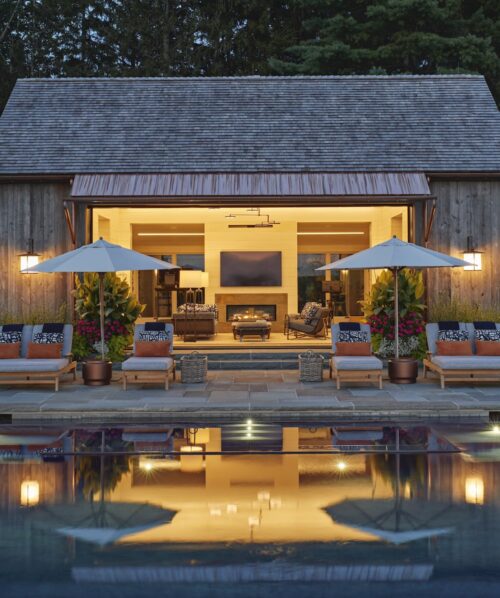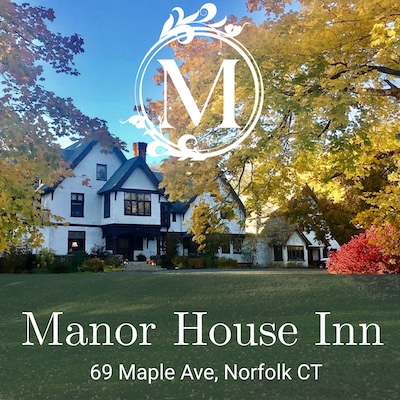May 19, 2020
By Douglas P. Clement
Roxbury architects Charles Haver and Stewart Skolnick received the go-ahead in September 2018 to design a swimming pool, pool house, and gardens on a 70-acre gentleman’s farm in Washington owned by a dream client who previously had them renovate a barn into an entertainment building, design a new main house, renovate a guest house and a stable, and oversee the property’s landscaping. “The client was really terrific. They gave us complete artistic license,” Haver says. There was just one caveat. This new summer retreat had to be move-in ready by Memorial Day 2019, which meant working through the winter and compressing the normal timeframe by nearly four months.
The pressure was on, which meant the veteran architects and their team of professionals needed to innovate. Seth Churchill of Churchill Building Company suggested creating a tent to protect Drakeley Pool Company’s pool construction site from weather conditions, and landscape architect Wesley Stout performed “planting magic” in very short order as the clock ticked down. In the end, Haver jokes, “The coffee table arrived at ten am and the client arrived at 11 am.”
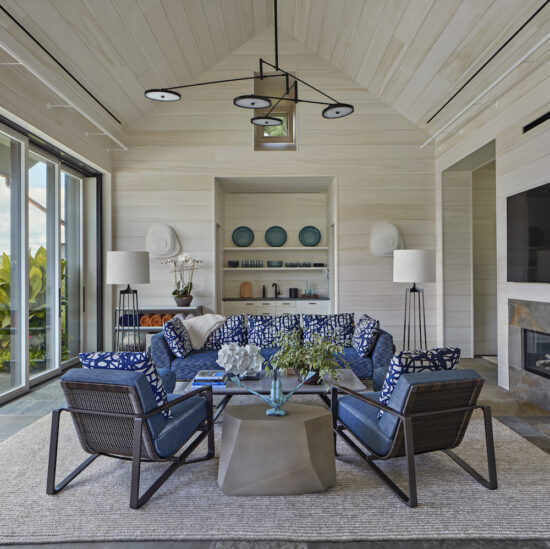
Hidden within the anecdote is the reason luxury properties broker Maria Taylor of Klemm Real Estate calls Haver & Skolnick Architects-designed properties “eminent masterpieces” and testimonials from clients universally praise the architects’ refined aesthetic, professionalism, and attention to detail.
The Washington pool house project may have come together quickly, but the pace of the project merely inspired especially enlightened design, giving the hilltop landscape with views of Mt. Tom a year-round bijoux that Skolnick calls “the last piece of the puzzle” for the property.
“The other buildings are very traditional,” he says. “We wanted this building to feel a little bit different. We wanted to make it a contemporary piece of architecture.” Though the pool house riffs on a traditional saltbox design, it embodies modernism through both a defining design element and the curation of materials.
“We designed the building itself almost to be an open air porch in the summer,” Haver says, noting the fully retractable glass panels facing the pool that blur the line between interior and exterior, as the bluestone paving of the pool terrace extends into the pool house. “You really feel you’re part of the whole environment,” says Haver.
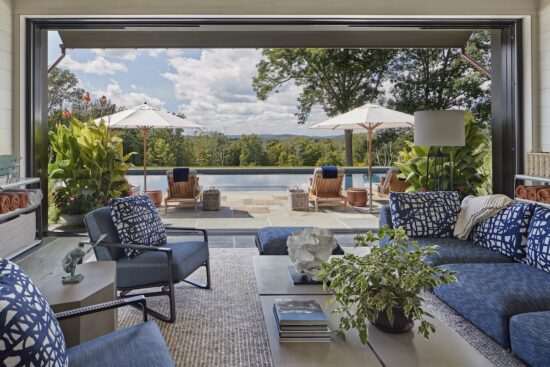
“Everyone views what modern means in a different manor,” Skolnick says. “One of the things Charles and I think makes a modern building is getting the palette of materials down to just a few elements. In this case, the silver weathered siding structure, punctuated by contemporary copper overhangs and lanterns, features just three interior materials, bluestone slabs, whitewashed pine board, and oil-rubbed bronze.
If the form delights the eye, then the function nourishes the family’s soul. The pool house features a gym, a pantry, and carefully incorporated storage areas, as well as a double-sided central fireplace giving the building four-season appeal. “It’s a great place to sit in a snowstorm with the wall of glass and wonderful view,” Haver says.
The pool itself features a submerged spa and a series of gradual entry platforms, where guests can lounge.
“When they come up from the city, they want to spend time together even if they’re doing different activities,” Skolnick says of the clients. “The whole design is meant to inspire social interaction.” Everything and everyone is tied together by the view in a resort-like atmosphere with lush tropical plantings. The pool terrace, for example, is framed with tall grasses, and the copper outdoor shower is surrounded by banana plants.
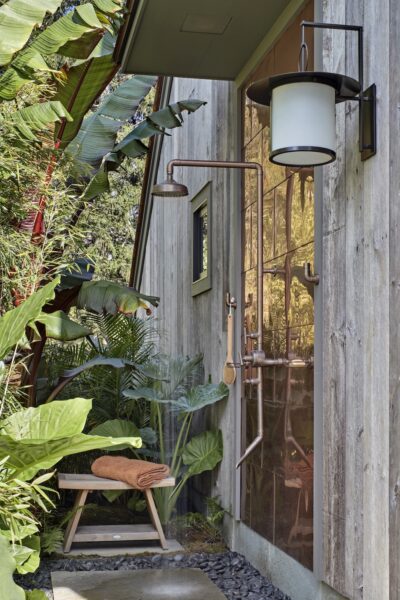
“This client could choose to spend their summers anywhere. We tried to create a very unique environment, the sense they were getting away from the main house,” Skolnick says. In January, the architects received word the pool house project had won a 2020 Bulfinch Award in the Small Project/Folly category from the Massachusetts-based Institute of Classical Architecture & Art, devoted to advancing the classical tradition in architecture, urbanism, and allied arts.





